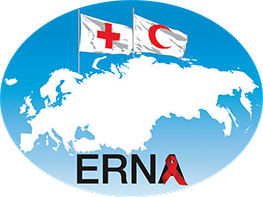Global HIV & AIDS statistics — 2020 fact sheet
GLOBAL HIV STATISTICS
- 26 million [25.1 million–26.2 million] people were accessing antiretroviral therapy as of the end of June 2020.
- 38.0 million [31.6 million–44.5 million] people globally were living with HIV in 2019.
- 1.7 million [1.2 million–2.2 million] people became newly infected with HIV in 2019.
- 690 000 [500 000–970 000] people died from AIDS-related illnesses in 2019.
- 75.7 million [55.9 million–100 million] people have become infected with HIV since the start of the epidemic (end 2019).
- 32.7 million [24.8 million–42.2 million] people have died from AIDS-related illnesses since the start of the epidemic (end 2019).
People living with HIV
- In 2019, there were 38.0 million [31.6 million–44.5 million] people living with HIV.
- 36.2 million [30.2 million–42.5 million] adults.
- 1.8 million [1.3 million–2.2 million] children (0–14 years).
- 81% [68–95%] of all people living with HIV knew their HIV status.
- About 7.1 million people did not know that they were living with HIV.
People living with HIV accessing antiretroviral therapy
- As of the end of June 2020, 26.0 million [25.1 million–26.2 million] people were accessing antiretroviral therapy.
- In 2019, 25.4 million [24.5 million–25.6 million] people were accessing antiretroviral therapy, up from 6.4 million [5.9 million–6.4 million] in 2009.
- In 2019, 67% [54–79%] of all people living with HIV were accessing treatment.
- 68% [54–80%] of adults aged 15 years and older living with HIV had access to treatment, as did 53% [36–64%] of children aged 0–14 years.
- 73% [60-86%] of female adults aged 15 years and older had access to treatment; however, just 61% [48-74%] of male adults aged 15 years and older had access.
- 85% [63–100%] of pregnant women living with HIV had access to antiretroviral medicines to prevent transmission of HIV to their child in 2019.
New HIV infections
- New HIV infections have been reduced by 40% since the peak in 1998.
- In 2019, around 1.7 million [1.2 million–2.2 million] people were newly infected with HIV, compared to 2.8 million [2.0 million–3.7 million] people in 1998.
- Since 2010, new HIV infections have declined by 23%, from 2.1 million [1.6 million–2.9 million] to 1.7 million [1.2 million–2.2 million] in 2019.
- Since 2010, new HIV infections among children have declined by 52%, from 310 000 [200 000–500 000] in 2010 to 150 000 [94 000–240 000] in 2019.
AIDS-related deaths
- AIDS-related deaths have been reduced by 60% since the peak in 2004.
- In 2019, around 690 000 [500 000–970 000] people died from AIDS-related illnesses worldwide, compared to 1.7 million [1.2 million–2.4 million] people in 2004 and 1.1 million [830 000 –1.6 million] people in 2010.
- AIDS-related mortality has declined by 39% since 2010.
Women
- Every week, around 5500 young women aged 15–24 years become infected with HIV.
- In sub-Saharan Africa, five in six new infections among adolescents aged 15–19 years are among girls. Young women aged 15–24 years are twice as likely to be living with HIV than men.
- More than one third (35%) of women around the world have experienced physical and/or sexual violence by an intimate partner or sexual violence by a non-partner at some time in their lives.
- In some regions, women who have experienced physical or sexual intimate partner violence are 1.5 times more likely to acquire HIV than women who have not experienced such violence.
- Women and girls accounted for about 48% of all new HIV infections in 2019. In sub-Saharan Africa, women and girls accounted for 59% of all new HIV infections.
90–90–90
- In 2019, 81% [68–95%] of people living with HIV knew their HIV status.
- Among people who knew their status, 82% [66–97%] were accessing treatment.
- And among people accessing treatment, 88% [71–100%] were virally suppressed.
- Of all people living with HIV, 81% [68–95%] knew their status, 67% [54–79%] were accessing treatment and 59% [49–69%] were virally suppressed in 2019.
Key populations
- Key populations and their sexual partners account for:
- 62% of new HIV infections globally.
- 99% of new HIV infections in eastern Europe and central Asia.
- 97% of new HIV infections in the Middle East and North Africa.
- 96% of new HIV infections in western and central Europe and North America.
- 98% of new HIV infections in Asia and the Pacific.
- 77% of new HIV infections in Latin America.
- 69% of new HIV infections in western and central Africa.
- 60% of new HIV infections in the Caribbean.
- 28% of new HIV infections in eastern and southern Africa.
- The risk of acquiring HIV is:
- 26 times higher among gay men and other men who have sex with men.
- 29 times higher among people who inject drugs.
- 30 times higher for sex workers.
- 13 times higher for transgender people.
HIV/tuberculosis (TB)
- TB remains the leading cause of death among people living with HIV, accounting for around one in three AIDS-related deaths.
- In 2018, an estimated 10.0 million [9.0 million–11.1 million] people developed TB disease, approximately 9% of whom were living with HIV.
- People living with HIV with no TB symptoms need TB preventative therapy, which lessens the risk of developing TB and reduces TB/HIV death rates by around 40%.
- 1.8 million people living with HIV across 65 countries started preventive treatment for TB in 2018.
- It is estimated that 44% of people living with HIV and TB are unaware of their coinfection and are therefore not receiving care.
